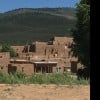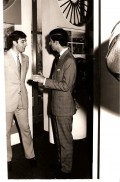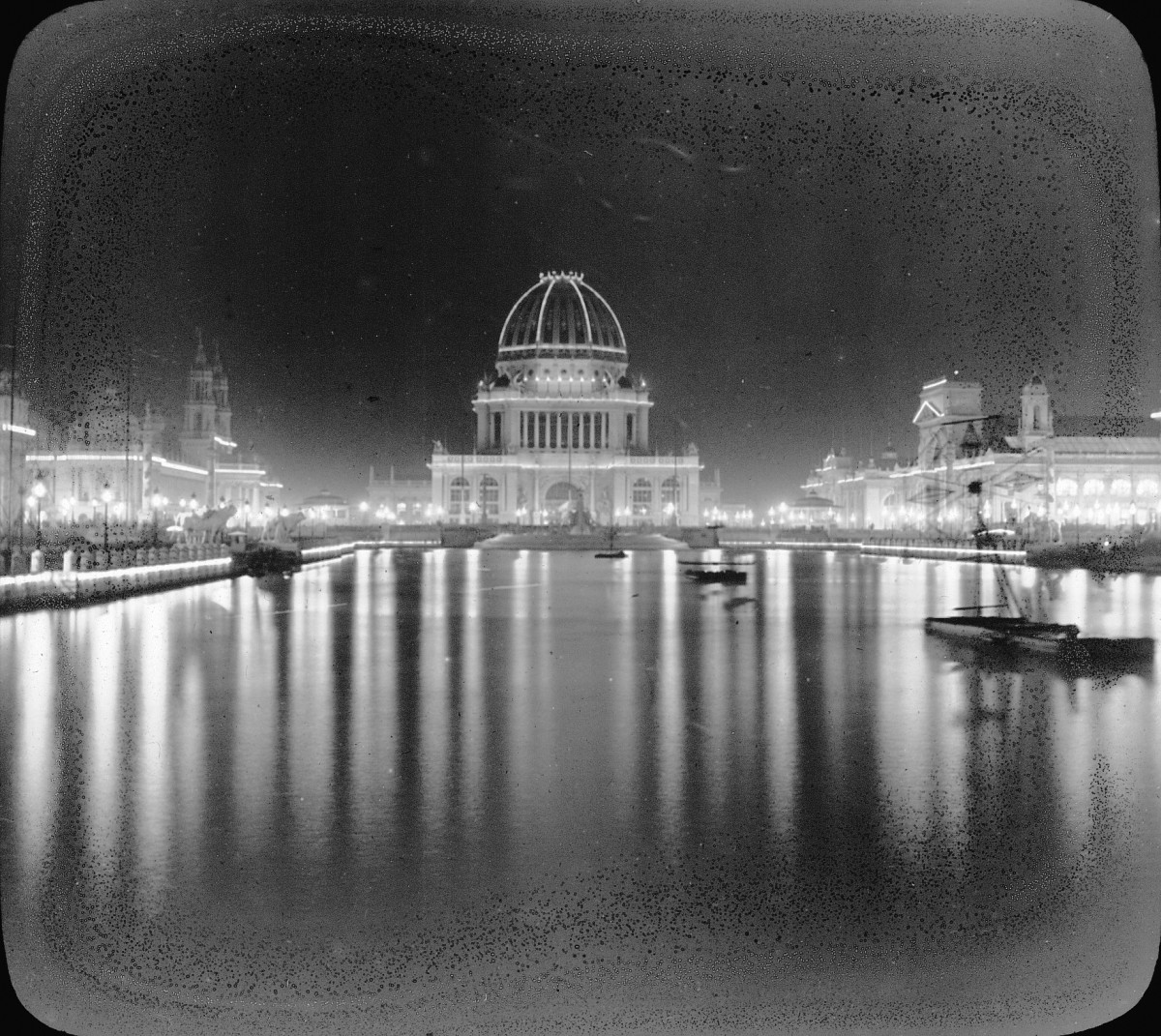50th Anniversary of the 1964-65 New York World's Fair
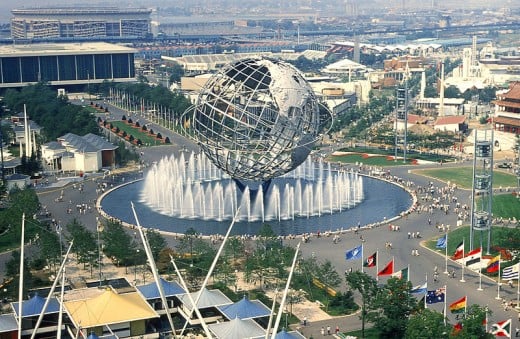
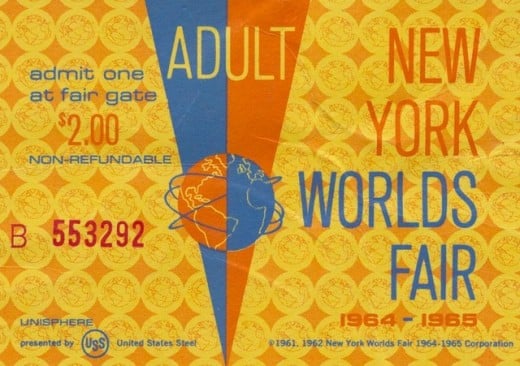
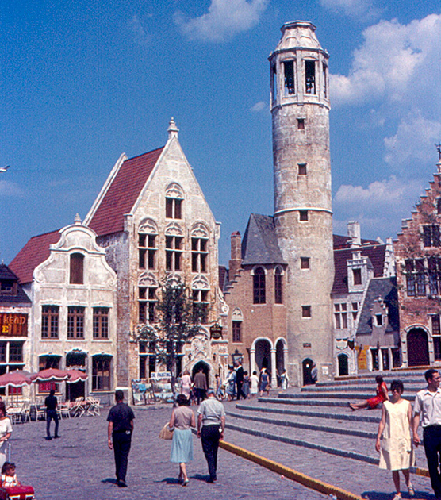
Memories
My cousin's wife, her name is Susan, and I were recently reminiscing about the 1964/65 New York World's Fair and sharing our memories of that spectacular, vibrant, magnificent fair that we both experienced when we were about ten years old. We are both baby boomers and this was a significant experience that greatly impacted our lives.
We were both fortunate to visit this World's Fair more than once, and Susan had me beat. Her parents took her to the fair every Sunday it was opened because she lived in Queens. I only attended it three or four times over the two years it was held at Flushing Meadows (Queens), NY.
My family was living in NJ at the time, only two hours from the fair, and so we were able to experience this great phenomenon several times. Susan and I were mesmerized by the great pavilions, some of American businesses, some of different countries, and some of different states in the U.S.
It was a large colorful extravaganza that portrayed all that was good with America. It was mid-20th century and America was in its glory. It was an optimistic time in America and the fair portrayed that in the many pavilions it featured.
The theme of the fair was Peace Through Understanding, and the fair was dedicated to Man's Achievement on a Shrinking Globe in an Expanding Universe. The Unisphere, the 12 story high stainless steel model of the earth which stood at the entrance of the fair, was the symbol of this theme.
Ironically, this World's Fair happened in history just on the cusp of the turbulent years of the Viet Nam War, our country's cultural changes, and our struggles for civil rights. But, for 360 days, the World's Fair showed us what America had done right and all that it could be in the future.
Today, as Susan and I reminisce on the fair and post articles about it, we are doing this all through our PC's, laptops and iphones, which remarkably were predicted for the future at the 1964/65 World's Fair.
We both find this amazing because as visitors to the fair, we had our first interaction with computer equipment. Several of the corporations that sponsored pavilions demonstrated the use of mainframe computers, computer terminals with keyboards, CRT displays, Teletype machines, punch cards and telephone modems.
All this was the burgeoning future in America and we marvel that it did come to pass. The Bell Telephone Systems (remember the phone monopoly system across the U.S. before deregulation?) Pavilion showed hand held phones of the future (our cell phones today) and wall phones with a vision screen to see who was calling. (today in the homes of my Italian relatives in Italy.)
These devices were the forerunners to Skype where now we can communicate with vision with anyone in the world, anytime, day or night. As ten-year-old's, Susan and I saw the great possibilities of our country on the rise.
This was also the dawn of the space race with the Soviet Union and in the Space Pavilion the space age was well represented here.
One of the great impacts of the fair was the Vatican City Pavilion which featured Michelangelo's Pieta, that he so finely chiseled that it nearly looked alive to us. Yes, the Vatican sent its most prized sculpture from St. Peter's Basilica for viewing at the World's Fair.
And we both ate Belgium waffles ( a waffle topped with strawberries and then whipped cream) for the first time at the World's Fair's Belgium Pavilion which was the reconstruction of a medieval town in Belgium.
Although there were many international pavilions, this fair was really the showcase of the mid-20th century American culture and technology.
Following is a glimpse of what we remember from the 1964/65 New York World's Fair.
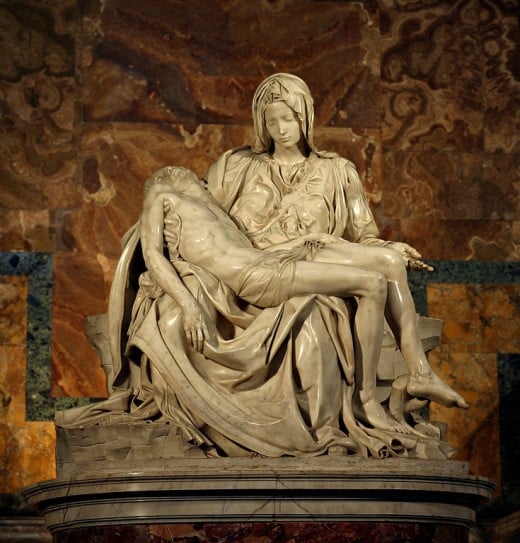
Not all was well behind the scenes
Read an article written by a woman who was a worker and presenter at the Coca-Cola Pavilion at:
www.newyorker.com/online/blogs/culture/2014/04/the-1964-worlds-fair-wasn't-so-great.html
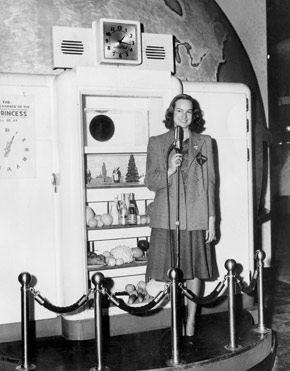
The Fair
The 1964/65 World's Fair ran for two six month seasons: April 22-October 18, 1964 and April 21-October 17, 1965 for a total of 360 days. More than fifty-one million attended the fair.
The chief organizer of the fair was Robert Moses, a master builder in NYC, with vast experience with fundraising for large public projects. He was head of the corporation established to run the fair.
The World's Fair was not sanctioned by the Bureau of International Expositions (BIE) headquartered in Paris because they had just sanctioned the 1962 World's Fair in Seattle, WA and they only sanction one world's fair per country every ten years.
But, Moses and his corporation carried on anyway without the BIE sanction. Many international countries had pavilions at the fair despite this: Spain, Vatican City, Japan, Mexico, Sweden,
Austria, Denmark, Thailand, Philippines, Greece, Pakistan, and Ireland as well as some African and Middle Eastern countries all joined the World's Fair.
Indonesia sponsored a pavilion but withdrew from the fair in 1965, as well as the United Nations because of anti-Western and anti-American rhetoric targeted at President Lyndon Johnson over the Viet Nam War.
Those countries which did not participate in the fair were: Canada, Australia, the Soviet Union and many major European countries.
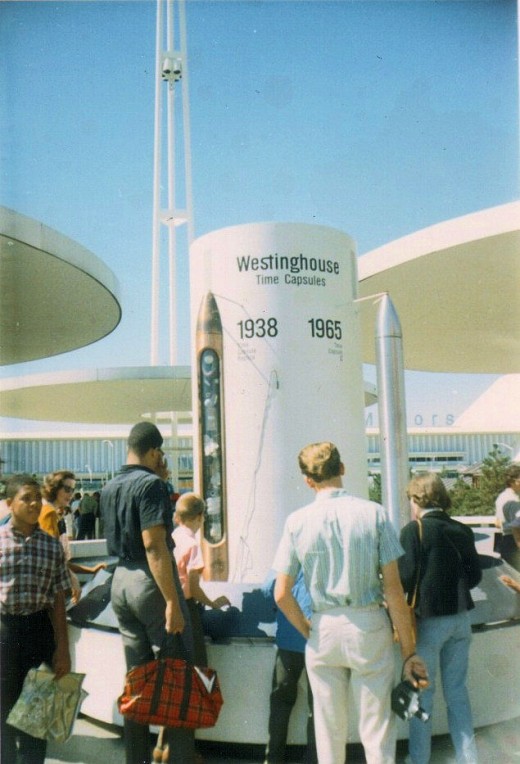
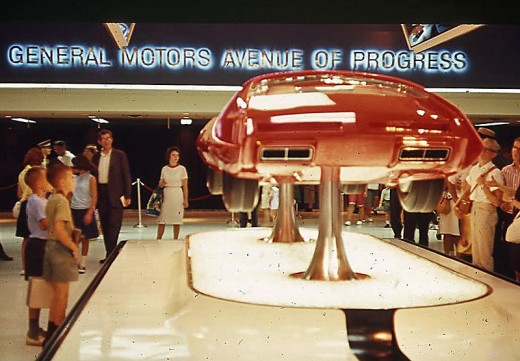
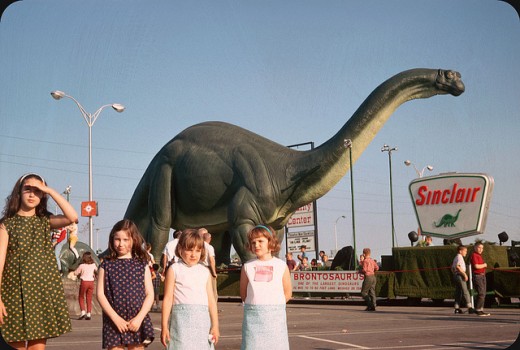
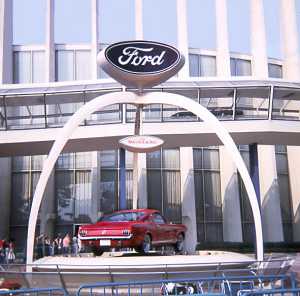
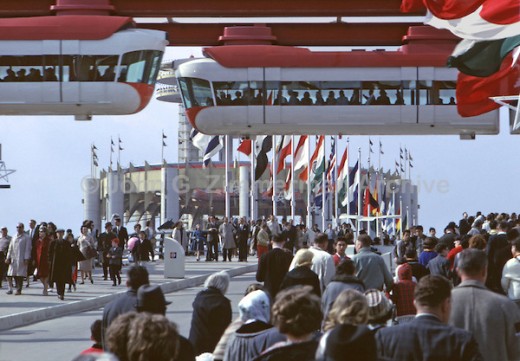
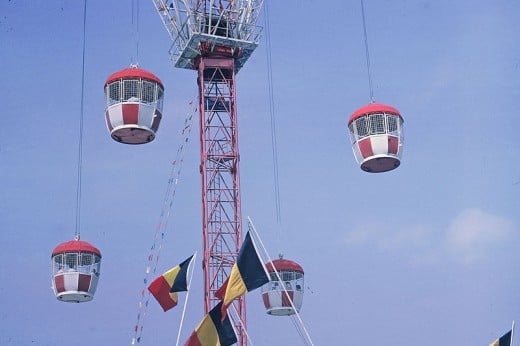
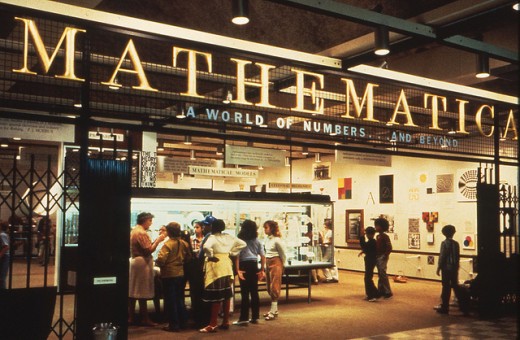
New York State Pavilion
New York State was the host to the fair and built a six million dollar open-air pavilion called the Tent of Tomorrow and was designed by modernist architect, Philip Johnson. It featured three high-spot observation towers that included cafeterias and restaurants. My family ate in one of the restaurants and had a view of the entire fair from high above.
On the ground floor of one of the towers as a twenty-six foot scale reproduction of the New York State Power Authority's St. Lawrence hydroelectric plant. Just an example of our electric infrastructure at the time. Has it changed from 1964? Not much.
United States Pavilion
The title of our pavilion at the fair was Challenge to Greatness, and focused on President Lyndon B. Johnson's "Great Society" proposals. It featured a fifteen minute ride through a filmed presentation of United States history.
There was a tribute to former President John F. Kennedy, who broke ground for the pavilion in December 1962, but was assassinated in November 1963. He never lived to see the fair.
U.S. Space Park
This pavilion was sponsored by NASA, the Department of Defense and the fair. It featured a Gemini capsule, an Atlas with Mercury Capsule and a Thor-Delta Rocket. These were our first man propelled capsules in space.
The Aurora 7, Apollo command/service module and Lunar Excursion Module were also featured along with unmanned spacecraft.
General Motors Pavilion
This presentation featured Futurama where visitors seated in moving chairs glided past elaborately detailed miniature 3D model scenery depicting life in the future: microwave ovens and the cartoon Jetson's type houses and transportation. This was one of the fair's most popular exhibit.
I loved this presentation and have often wondered where is the Jetson's type transportation, flying cars, today?
This pavilion also had one of the most interesting of presentations. It featured future life of living underwater in underwater apartments and underwater hotels. I found this fascinating and think we should extend our knowledge of the ocean beds throughout the world.
Today, we can't even find Malaysian flight #370 which has seemed to disappear over the Indian Ocean. What a sad statement on the Futurama of our country.
Bell System Pavilion
This pavilion was also one of my favorite ones to see. In the 1960s the Bell Telephone System was the only phone company available at the time throughout the United States. Every U.S. citizen was part of the Bell Telephone System.
Their presentation featured a fifteen minute ride in moving armchairs depicting the history of communication in dioramas and film. There was a demonstration of a computer modem and we saw the telephones of the future. Hand held phones - today's cell phones and telephones with a screen to actually see who you are talking to.
I remember being amazed at these two future telephone options and today it is amazing to me it came true.
Westinghouse Pavilion
This pavilion was also one of my favorites. Westinghouse planted a second time capsule next to the one planted there in 1939 for that year's World Fair. Some of the contents put in the 1964 capsule were a World's Fair Guidebook, an electric toothbrush, credit cards (which were rare at this time) and a 50 star flag.
Both of these capsules were placed southwest of the Unisphere and each are marked by a monument today. They are to be opened in the year 6939. Will our civilization even be around in that year?
Dinoland
This was another favorite pavilion sponsored by the Sinclair Oil Corporation. It featured life-size replicas of nine different dinosaurs, including their signature Brontosaurus. They moved by robotic means.
Ford Motor Company Pavilion
This was a fabulous presentation of all the Ford cars being built at the time. And the surprise? Ford introduced the first Ford Mustang sports car on April 17, 1964. The public went crazy over this new car and it has been a popular one to this day.
This pavilion featured fifty actual convertible Ford vehicles, including Ford Mustangs. On the People Mover, which was a ride system, visitors entered the vehicles on a main platform as they moved slowly along the track and we saw a Ford presentation. We were able to climb in and out of the vehicles and pretend we were actually driving them. This was one of the highlights of the fair.
General Electric Pavilion
The Disney Productions Company sponsored Progressland here. We were seated in a revolving auditorium, the Carousel of Progress, which was an audio-animatronic presentation of the progress of electricity in the home.
The Sherman Brothers (who wrote the songs for the Disney movie Mary Poppins) wrote the signature song for this pavilion, There's a Great Big Beautiful Tomorrow.
The highlight of this presentation was the brief plasma "explosion" of controlled nuclear fusion. We were amazed and awed by this.
The Pepsi Pavilion
This was another favorite of mine and I went here every time I was at the fair. In a nod to UNICEF and the world's children, Disney Productions also sponsored and debuted its signature song, It's a Small World. This song was also written by the Sherman Brothers and included animated dolls with identical faces but with different world country's costumes.
This song was near and dear to my heart and this was also my grandfather's favorite pavilion.
IBM Pavilion
This pavilion featured a five hundred seat grandstand and the showing of the film, Think, that was shown on fourteen large and eight small screens that showed the workings of computer logic.
Mathematics: A World of Numbers . . . and Beyond presented mathematical concepts and models. This was my least favorite pavilion as I am not a math connoisseur, but, it did have one feature that I loved. It had a feature that demonstrated handwriting recognition on a mainframe computer and this was my first hands on interaction with a computer.
Parker Pen Pavilion
This was another pavilion favorite of mine. At this exhibit we saw all the different pens and pencils that Parker manufactured. But the best part of this exhibit was being matched up with an international pen pal. I took advantage of this, although, today, I can't remember which country or pen pal I was matched up with. We did exchange a few letters, but that was all.
These were the highlights of the fair for Susan and me. We remember them vividly because they made such an impact and impression on us. We loved the fair each time we went and at the age of ten, all the promise of the future certainly seem possible to us then.
If only our nation could make the giant leaps it takes to make some of these future suggestions part of our lives today, the present.
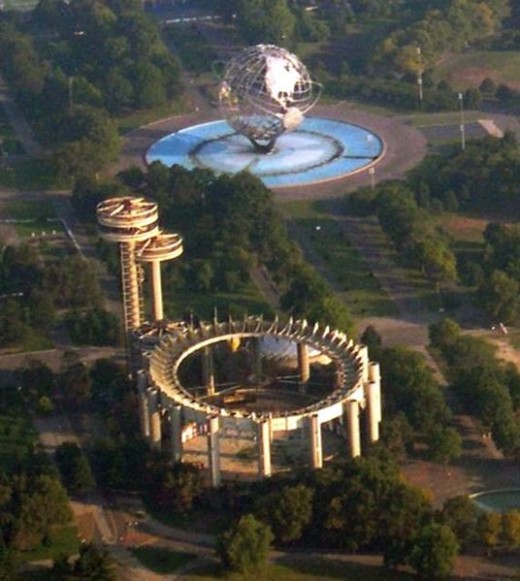
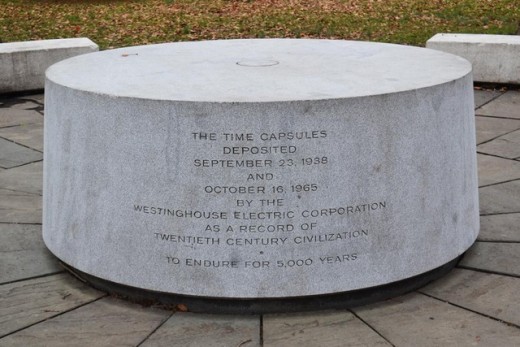
After the fair
The fair grounds were turned into the Flushing Meadow Park and remains a park to this day. All that is left as remembrances to the fair is the Unisphere and the NY Pavilion and observation towers.
The open air pavilion was used for rock concerts following the closing of the fair, but today, along with the towers, it is in disrepair. There is even talk and discussion of tearing these down at this point.
There is a memorial over top of the time capsules that were buried there. So if our civilization makes to to 6939, they can take a nostalgic and probably humorous look at how we lived in the mid-20th century.
Disney's influence on the fair can still be seen in the relocation of several of the exhibits at Disneyland in Anaheim, CA. Dinoland has become the Disneyland Railroad Primeval World diorama.
The Carousel of Progress was moved to Disneyland in 1967 and to Magic Kingdom (Florida) in 1973.
Walt Disney World in Orlando, FL has Epcot Center designed as a "permanent" world's fair.
It's a Small World, Disney's most popular exhibit at the world's fair is now at all five Disney Magic Kingdom-style parks and has not lost its popularity.
Will the U.S. ever host a World's Fair again? It is hard to imagine in the world today. 1964/65 was a kinder, optimistic and almost a naïve time in our history.
But, ahh, the memories!
A step back in time . . .
© 2014 Suzette Walker
